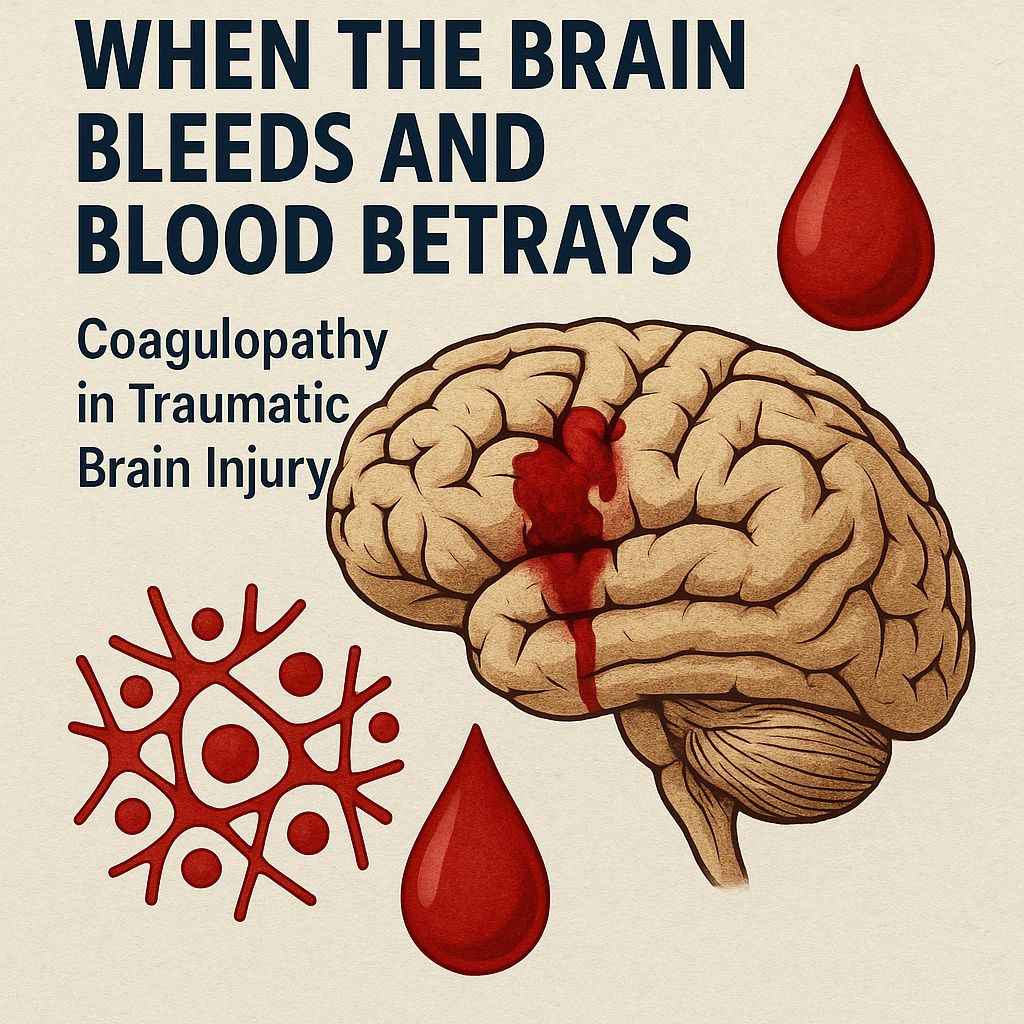
Author(s): Sharma M, Srivastava C, Yadav AK, Singh A, Choudhury C
Cite this article as: Sharma M, Srivastava C, Yadav AK, Singh A, Choudhury C. When The Brain Bleeds, And The Blood Betrays: Coagulopathy In Neurotrauma. Int J Health Res Medico Leg Prae. 2025 Jan-June;11(1):24-30.
ABSTRACT Coagulopathy following neurotrauma, encompassing both traumatic brain injury and spinal cord injury, represents a significant clinical challenge, impacting patient outcomes and demanding prompt recognition and management. This complex condition, characterised by abnormalities in the coagulation cascade, fibrinolysis, and platelet function, can manifest as bleeding or thrombosis, further complicating the clinical picture. The precise mechanisms driving coagulopathy in the context of neurotrauma are not fully elucidated. Still, it is believed to stem from a combination of factors, including the release of tissue factors from injured brain tissue, activation of the inflammatory cascade, and dysfunction of the endothelial lining of blood vessels. Traumatic brain injury is a leading cause of mortality and morbidity, and the development of coagulopathy following TBI is associated with increased mortality in these patients. The pathophysiology of coagulopathy following traumatic brain injury is multifaceted and intricate, with the precise mechanisms remaining an area of intense investigation. One proposed mechanism involves releasing tissue factors from injured brain tissue into the circulation, triggering the coagulation cascade. This leads to the formation of thrombin, the enzyme responsible for converting fibrinogen to fibrin, ultimately resulting in clot formation. The extent of tissue injury appears to correlate with the severity of coagulopathy, suggesting a dose-dependent relationship between tissue factor release and coagulation activation. Dysregulation of the coagulation system after TBI can lead to both hemorrhagic and thrombotic complications, thereby worsening the initial brain injury and overall patient outcome. In addition to the release of tissue factors, activation of the inflammatory cascade following TBI can also contribute to the development of coagulopathy. The inflammatory response, characterised by the release of cytokines such as interleukin-1, interleukin-6, and tumour necrosis factor-alpha, can disrupt the delicate balance of the coagulation system. These inflammatory mediators can promote endothelial dysfunction, impairing the ability of blood vessels to regulate coagulation and increasing the risk of bleeding and thrombosis. As reflected by elevated levels of von Willebrand factor and thrombomodulin, endothelial damage may predict delayed brain injury. Disrupting the blood-brain barrier after TBI can lead to coagulation factors and inflammatory mediators entering the brain parenchyma, exacerbating the inflammatory response and contributing to secondary brain injury. Keywords: Coagulopathy; traumatic brain injury; bleeding diathesis; antifibrinolytics; Tranexamic acid. |
Article reads consist of online article views and PDF downloads.
Views
316
Downloads
2